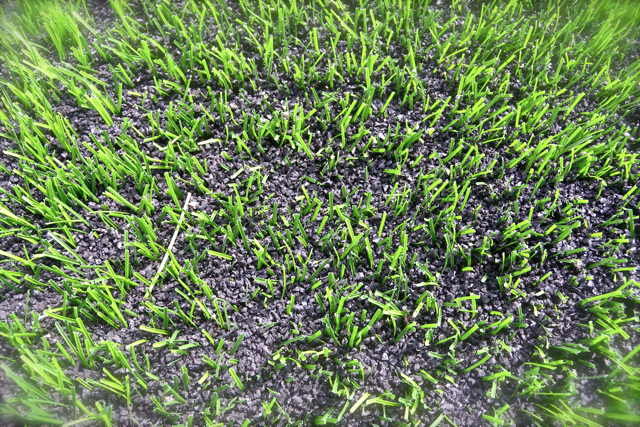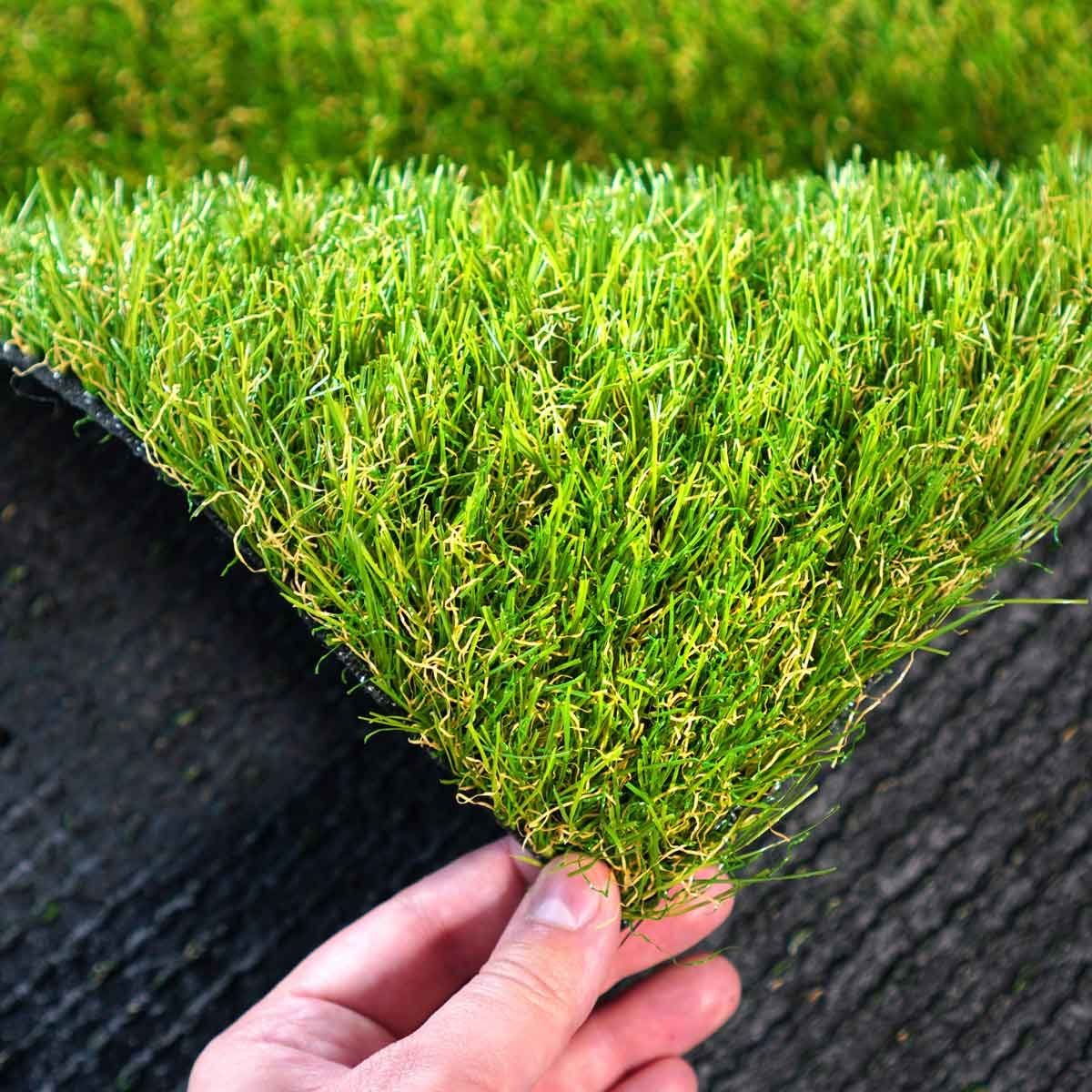Upgrade Your Outdoor Space with Arizona Artificial Turf for a Lush Green Look
Upgrade Your Outdoor Space with Arizona Artificial Turf for a Lush Green Look
Blog Article
Delve Into the Environmental Benefits of Opting for Synthetic Grass Solutions
The fostering of synthetic grass services offers an engaging chance to deal with pressing ecological challenges. By substantially minimizing water usage and reducing the application of damaging chemicals, these options not just promote sustainable landscape design but additionally safeguard local ecosystems. The reduced carbon impact associated with lowered upkeep activities contributes to an extra lasting approach to land administration. Nevertheless, the effects of these advantages prolong past mere preservation initiatives, increasing inquiries concerning their lasting influence on habitat preservation and general eco-friendly balance. Checking out these dimensions reveals a complex interplay worth considering.
Water Conservation Benefits
Among one of the most significant benefits of artificial lawn is its ability to conserve water. Standard yard lawns need substantial irrigation, specifically in areas vulnerable to drought or water constraints. On the other hand, man-made lawn does not need watering, dramatically reducing the overall need for water resources. This attribute is specifically helpful in dry areas where water shortage is a pressing issue.
By removing the requirement for normal watering, synthetic grass adds to lasting landscape techniques and helps alleviate the ecological influence of excessive water consumption. The preservation of water extends to the reduction of drainage, which can lead to dirt erosion and river contamination.
Furthermore, the setup of synthetic grass permits municipalities and homeowners to assign water resources a lot more successfully, concentrating on necessary uses such as alcohol consumption water and farming. The shift in the direction of synthetic grass not only promotes accountable water use however also straightens with wider environmental objectives focused on preserving natural resources.
As neighborhoods significantly focus on sustainability, the water conservation benefits of artificial grass present a compelling case for its adoption in residential and industrial landscape design projects.
Lowered Chemical Use
The shift to artificial lawn considerably lowers the reliance on chemical treatments typically utilized in natural turf upkeep. Standard lawn administration usually includes the application of chemicals, fertilizers, and herbicides to advertise development and control insects. These chemicals can posture threats to human health and wellness, local wildlife, and the atmosphere, adding to soil and water contamination.
In comparison, synthetic grass gets rid of the requirement for these hazardous compounds. When installed, it requires marginal maintenance, largely including routine cleansing and seldom infill replenishment. This reduction in chemical usage not just profits the prompt environment yet likewise adds to broader environmental stability. By reducing the launch of synthetic substances into the ecosystem, synthetic grass advertises much healthier dirt and water supply.
In addition, the absence of chemical overflow associated with man-made lawn installments helps safeguard regional waterways from air pollution, sustaining water life and maintaining biodiversity. Artificial turf companies phoenix. As neighborhoods significantly prioritize sustainable practices, opting for synthetic grass provides a feasible remedy that straightens with ecological conservation goals. With this change, homeowner can take pleasure in rich green rooms without jeopardizing ecological health and wellness, paving the means for an extra sustainable future
Lower Carbon Impact

Additionally, the installation of synthetic grass can cause significant water conservation. Natural yards call for considerable amounts of water for irrigation, which not just adds to the carbon impact related to water removal and treatment yet likewise pressures neighborhood water sources. On the other hand, man-made grass requires marginal maintenance, requiring no watering, therefore considerably lowering water usage and its connected energy costs.
In addition, the durability of man-made turf adds to its decreased carbon influence. With a life-span of as much as 15 years or more, the need for constant replacements is diminished, leading to much less waste and reduced power usage in manufacturing and getting rid of typical grass choices. On the whole, synthetic grass presents a sustainable option for ecologically conscious landscaping.
Habitat Preservation
Environment preservation is a vital factor to consider in the argument over landscape design selections, specifically when comparing artificial grass to all-natural lawn. All-natural grass yards usually hop over to these guys need extensive upkeep, including using fertilizers, chemicals, and herbicides, which can negatively influence regional communities. These chemicals can seep into the dirt and rivers, harming native vegetation and fauna and disrupting regional habitats.
In contrast, synthetic grass presents a chance to decrease the environmental impact of landscape design. By deciding for artificial turf, property owners can reduce the disturbance of all-natural environments related to typical grass treatment practices. Artificial turf removes the need browse around this site for hazardous chemicals, therefore securing neighboring wild animals and maintaining the integrity of surrounding ecological communities. The setup of artificial lawn can lead to the conversion of former turf locations into even more biodiverse landscapes, such as pollinator yards or indigenous plant locations, which can sustain regional wild animals.
Ultimately, the transition to synthetic grass not only preserves water and lowers upkeep efforts yet likewise promotes a more unified partnership between human activities and the natural atmosphere, promoting habitat preservation at the same time.
Long-Term Sustainability
Lasting sustainability is a vital consider evaluating the benefits of synthetic lawn over typical lawn lawns. Among the most considerable benefits of synthetic grass is its longevity; it can last as much as 15-20 years with minimal upkeep, whereas natural grass calls for regular reseeding and substitute. This durability minimizes the need for continuous sources, such as water, fertilizers, and chemicals, which are important for maintaining a healthy and balanced grass yard.
Additionally, synthetic grass contributes to a decrease in carbon discharges related to lawn care devices. Traditional lawns usually need gas-powered lawn mowers, leaners, and blowers, all of which contribute to air pollution. Turf installation phoenix az. On the other hand, synthetic grass eliminates the need for such equipment, advertising a cleaner setting
Additionally, the production of synthetic grass significantly utilizes recycled materials, enhancing its sustainability profile. As manufacturers adopt environmentally friendly methods, the environmental impact of synthetic grass remains to diminish.

Conclusion
The adoption of synthetic grass solutions presents significant environmental benefits, consisting of substantial water preservation, decreased dependence on damaging chemicals, and a reduced carbon impact. Additionally, synthetic grass aids in preserving natural habitats by minimizing land disturbance and advertising lasting sustainability through the use of resilient materials. Jointly, these aspects underscore the capacity of synthetic grass to contribute favorably to environmental health and wellness and use a feasible choice to conventional landscaping methods in a significantly resource-conscious globe.
In contrast, artificial lawn does not need watering, significantly decreasing the total demand for water resources. By minimizing the launch of artificial compounds right into the community, man-made grass advertises much healthier soil and water systems.
Additionally, the installment of man-made turf can result in considerable water preservation. In contrast, artificial lawn requires very little upkeep, requiring no watering, thereby significantly minimizing water use and its linked energy prices.

Report this page